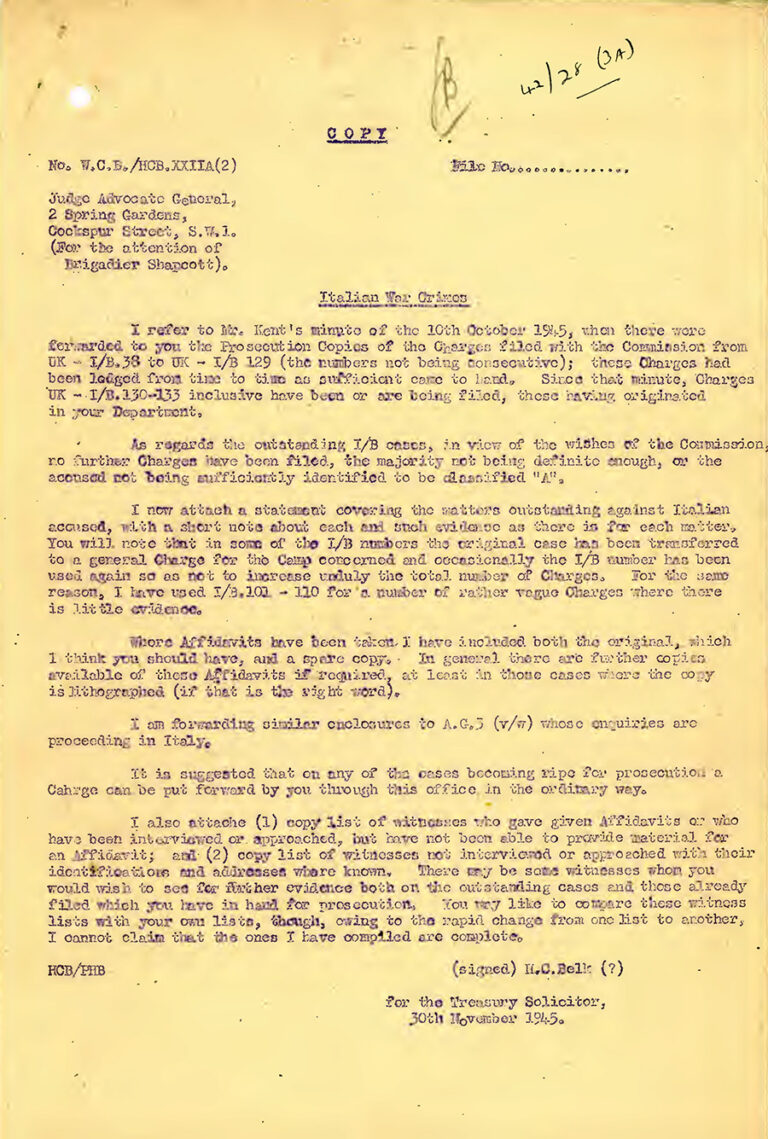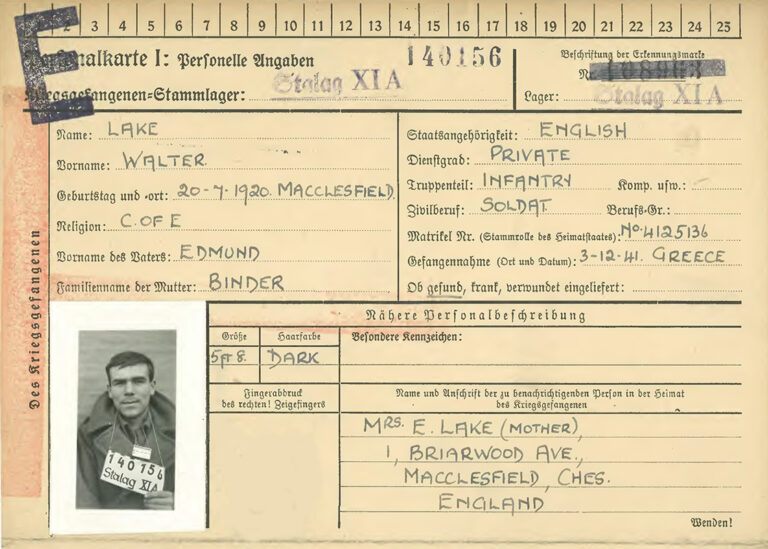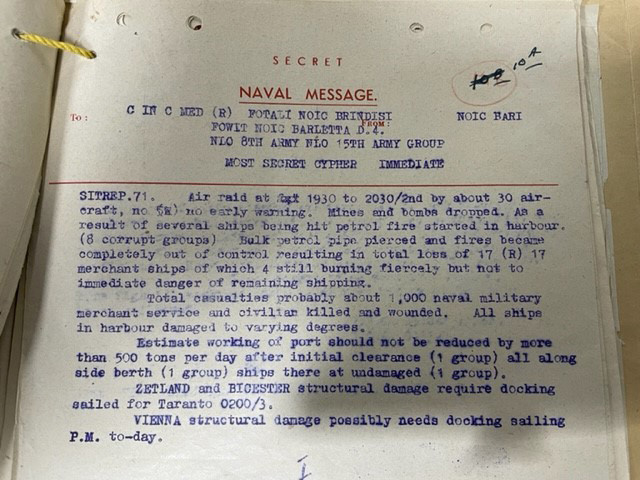This is the latest in a series of blogs to promote the work of volunteers cataloguing the series of records WO 416. This series consists of record cards of over 200,000 British and Allied prisoners of war and civilian internees captured in German occupied territory during the Second World War. The project expects to complete in Spring 2023. Other fascinating stories identified by volunteers since the project started in 2017 can be found here. Katrina is one of 22 volunteers working on this project and we are grateful for all of their efforts.
Many Allied prisoners of war captured in the Mediterranean area were held first in Italy, and then, when Italy capitulated in September 1943, swiftly transported by the Germans to prisoner of war camps in German-held territory. Conditions in Italian camps were often poor, especially for other ranks, sometimes due to lack of planning and provision and other times deliberately. However, the port town of Bari in Southern Italy held a special punishment prison for prisoners of war. In an affidavit written in 1945, one British prisoner of war, Private John Henry Nathan, captured in civilian clothes near Corinth in 1941, reported the terrible conditions in this Bari prison, with disease, a starvation diet, isolation and lack of medical help.

During the Italian armistice, John managed to escape and eventually reached the Allied lines. Others were not so lucky. Private Nathan’s affidavit listed other prisoners of war in the Bari prison at the same time, some of whom can be found in the WO 416 records. They were later transported to Germany and sent to work camps, including John (Jack) Levy of the Royal Army Service Corps (WO 416/222/329) whose cards show he was captured in Crete in June 1941, later taken to Stalag VIIIB Lamsdorf, where he fell ill and also spent a couple of days confined in the cells for being late for work. Also held in Bari was Private Walter Lake (WO 416/214/515), of the Cheshire Regiment, captured in Greece in December 1941, and then taken in 1943 to Stalag XIA in Altengrabow.

As Bari fell into Allied hands in September 1943, it became a vital port for Allied supplies. So great was the pressure for ammunition and other supplies, that the Allies kept the port running day and night, underestimating the risk from the Luftwaffe. Throughout the war, Allies were afraid Hitler would use poison gas and had secretly made provision to retaliate in case they did. On the night of 2 December 1943, a US ship, the SS John Harvey, laden with some 540 tonnes of mustard gas bombs, was stuck in Bari harbour, waiting its turn to unload at the docks, when an air raid by the Luftwaffe attacked the harbour, and blew up huge quantities of ammunition, destroying at least 17 ships outright, including the one carrying the mustard gas, damaging all the other ships in the harbour and rendering the harbour unusable. Secrecy hampered the rescue effort for, at first, doctors treating the hundreds of military and civilian injured were not told that many sailors were soaked with mustard gas. With a huge number of badly injured patients lined up, wet clothing which should have been removed was left, resulting in many deaths that could have been avoided. The shameful secret was hushed up: troops – including my father who was in Bari at the time – were told it was just an ammunition dump that had been blown up. With admirable hindsight, one senior military official commenting on the disaster wrote: ‘it seems most undesirable to unload chemical bombs in such a forward congested and important port’. For further information see WO 177/133 and AIR 23/1481.

Yet, years later, out of this terrible disaster did come one positive lesson. A recently published book about the Bari disaster recounts how a specialist doctor, brought in to treat the injured, realised that these terrible chemicals also had the potential, in the right dosage, to combat cancer – and the first steps in the science of chemotherapy had begun.
Further reading
- On Italian Prisoner of War camps and escaping in Italy, there are many books, of which perhaps the best known is ‘Love and War in the Appenines’ by Eric Newby. A very different account can be found in ‘Once a Hussar’ by Ray Ellis.
- On the poison gas disaster: ‘The Great Secret’ by Jennet Conant, Grove Press UK, published 2020.
Once again an interesting and (to me unknown) story brought to life by dedicated volunteer efforts.
Besides the references quoted by the author, a quick search on ‘Discovery’ shows that the National Archives holds a number of WO 204 series files detailing the attack on Bari and the loss of the SS John Harvey.
These are all files numbered as follows:
WO 204/1105
WO 204/1106
WO 204/4353
WO 204/5452